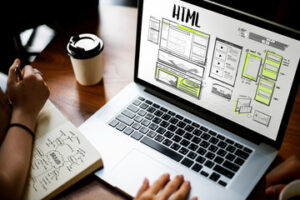5 Tips For Usability and Usability-Oriented Web Design
When attempting to create a website, a number of factors must be considered to create a user-friendly experience for the site’s visitors. This includes creating a structure that is easy to understand, visual clues that lead visitors to key information, and a user-centric approach to design.
 The usability of Web Design is an important consideration in developing a website. Ideally, it should be easy for users to navigate the site and complete tasks. It should also offer a quick solution to roadblocks and errors. It should be designed in a way that meets the needs of the target audience.
The usability of Web Design is an important consideration in developing a website. Ideally, it should be easy for users to navigate the site and complete tasks. It should also offer a quick solution to roadblocks and errors. It should be designed in a way that meets the needs of the target audience.
The importance of the user experience is emphasized over anything else in the web design process. A website optimized for mobile users has less clutter and a clear content hierarchy. It can be a good strategy to use high-contrast text to make the site easier. If you’re thinking of building a website, you’ll first consider the design itself. However, you’ll also need to get the right structure in place to achieve the best possible results. Here are some tips to help you along the way.
First, the tidbit: the best way to determine what kind of structure you need is to perform a content audit. The result of this will be an in depth content strategy which is sure to improve your search engine optimization and drive traffic to your site. Next, you’ll need to decide how many pages to include and what type of layout to use. You can do this by identifying your users’ needs and wants and designing a site that visually meets those needs.
Visual clues in web design are important to a successful user experience. They act as a mental shortcut for visitors and help them understand and complete a task. They are used to draw attention to important website areas and are often accompanied by alternative descriptive text. These techniques may include an arrow, a graphic or a contrasting color scheme.
The most common type of visual cue is a directional arrow. These are usually the most obvious. Aside from the arrow’s function, its color and shape must be considered. The most effective arrows point in the right direction and are of the right size. Easily recognizable links in web design are an essential part of any website. They can allow a prospect to stay longer on your site and improve your chances of conversion. There are a few important tips that you can follow to ensure that your link-rich web pages are both user-friendly and visually compelling.
The most obvious tip is to include a clear label for each link on the page. The label should describe the link’s function. While a label may not be as flashy as a graphic, it should still make sense to your readers. Another key element is the label’s color. The color should be selected carefully. Blue is a safe choice. However, red and green can also work if they match the overall color scheme.
Scale and weight are important components of a well-designed web experience. Using the appropriate units of measure can be a fun and interactive way to enhance the user’s experience. In addition to providing a measure of scale, this feature can also highlight sections of your site that are not otherwise prominent. This is particularly useful for web applications that use heavier typefaces, which the untrained eye might otherwise overlook.
The scale and weight of a website’s most important elements are something every designer should consider. For example, a mobile-first approach to content delivery might mean skipping a fancy mobile design for an easy-to-read site optimized for the mobile browser. User-centric design is a process that involves involving the users at every stage of the design process. This process lets developers see the project from the users’ perspective and helps them avoid making mistakes and wasting time. The results are more user-friendly products and better specifications.
You should identify and explore your target audience to make a user-centric product. This can be done by creating user personas. These personas will help you to understand the tasks the users need to complete, the challenges they face, and the solutions they will require. After you have a clear idea of the users’ requirements and needs, you can begin the process of designing. This will involve developing user journeys, wireframes, and mockups. It also includes conducting usability testing.





